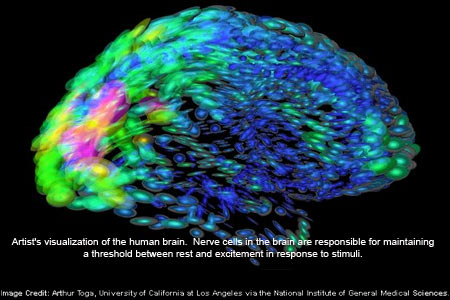Epilepsy which is a chronic neurological disorder may be reduced by only efficient treatment. The following article seems to provide novel points to a genetic route for gaining a detailed understanding and help treat the disorder. Researchers from the Penn State University claim to have found an ancient gene family that plays a role in controlling the excitability of nerves within the brain.
This rest-excitement balance is apparently regulated by ion channels known as neuronal ‘gates’ controlling the flow of electrical signals between cells. The scientists elucidate sodium and calcium channels to aid in accelerating neurons. Potassium channels seemingly help curb signaling between cells, boosting the threshold at which nerves fire. It was revealed that the genetic mechanisms regulating potassium channels and setting this threshold has not been well understood till date.
“In healthy people, nerves do not fire excessively in response to small stimuli. This function allows us to focus on what really matters. Nerve cells maintain a threshold between rest and excitement, and a stimulus has to cross this threshold to cause the nerve cells to fire. However, when this threshold is set too low, neurons can become hyperactive and fire in synchrony. As excessive firing spreads across the brain, the result is an epileptic seizure,” explained Timothy Jegla, an assistant professor of biology at Penn State University.
While conducting the investigation, researchers examined a potassium-channel gene called Kv12.2. This gene is believed to be active in resting nerve cells and is expressed in brain regions that are likely to face a seizure. Prior findings suggest the Kv12.2 potassium channel to be involved in spatial memory. But in the current research, experts highlight the way it can be linked to seizure disorders.
Jegla affirmed, “We decided that Kv12.2 was a good candidate for study because it is part of an old gene family that has been conserved throughout animal evolution. This ancient gene family probably first appeared in the genomes of sea-dwelling creatures prior to the Cambrian era about 542-million years ago. It is still with us and doing something very important in present-day animals.”
In the course of the research, an electroencephalography (EEG) device was employed to scrutinize the brains of mice. It was discovered that mice lacking the Kv12.2 gene developed frequent seizures, though without convulsions. Mice with chemical encouraging convulsive seizures were examined by the experts. The outcome was that normal mice registered a much higher convulsive-seizure threshold as compared to mice with a defective Kv12.2 gene.
Jegla added, “Ion-channel defects have been identified in inherited seizure disorders, but many types of epilepsy don’t have a genetic cause to begin with. They are often caused by environmental factors, such as a brain injury or a high fever. However, the most effective drugs used to treat epilepsy target ion channels. If we can learn more about how ion channels influence seizure thresholds, we should be able to develop better drugs with fewer side effects.”
Similar results were apparently noted on employment of a chemical inhibitor to block the Kv12.2 potassium channel in normal mice. Mice lacking functioning Kv12.2 gene nerve cells appeared to have abnormally low firing thresholds. Even small stimuli seemingly lead to seizures. So potassium channel is supposedly involved in the brain’s ability to remain ‘quiet’ and to respond selectively to strong stimuli. Further research will be conducted to ascertain the activation of the Kv12.2 potassium channel in normal animals can block seizures.
This research was funded by the National Institutes of Health through its National Institute for Neurological Disorders and Stroke.

